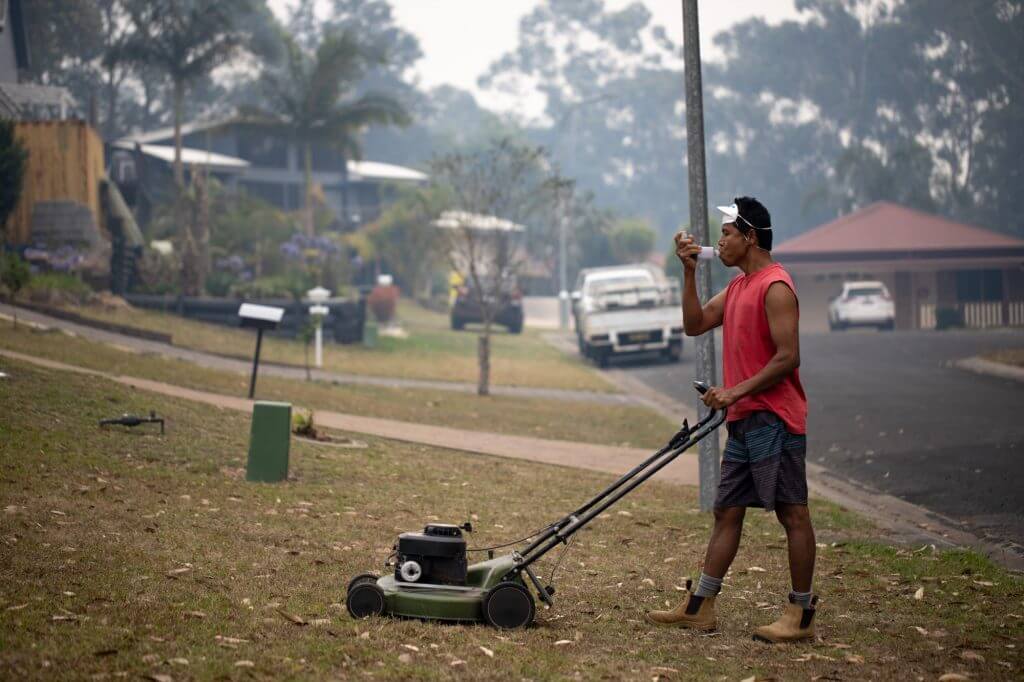1 September 2021
Now is the time to get AirSmart Australia
Key points:
- Asthma Australia welcomes the interim observations by the Royal Commission into Natural Disaster Arrangements (points 67-70) and the NSW Bushfire Inquiry Report recommendations (34-35) on air quality, both released in time for fire season.
- Both Inquiries align with Asthma Australia’s key recommendations on improving our national response to poor air quality, developed from insights found in the Bushfire Smoke Impact Survey 2019/20.
- It’s Asthma Week, Asthma Australia is calling for action around a national AirSmart campaign as a critical step in protecting public health, aligning with commentary from both Inquiries.
This Asthma Week (1 -7 September) Asthma Australia says there is no time to wait when it comes to getting Australians AirSmart on the health hazards of poor air quality, with fire season here, and hazard reduction burning underway.
About 2.7 million people in Australia are affected by asthma which makes them particularly vulnerable to breathing difficulties triggered by toxins in bushfire smoke, for which there is no safe level of exposure.
The push for getting Australians AirSmart aligns the NSWBushfire Inquiry Report which recommends immediate action on an air quality community education campaign and better air quality monitoring and alerts for all sources of air pollution in NSW. The interim observations by the bushfire Royal Commission reinforces the need for better air quality information and advice, and recognises that many deaths may have been caused as a result of exposure to bushfire smoke.
Asthma Australia CEO Michele Goldman said Asthma Australia welcomed observations and recommendations on air quality to protect people with asthma and stressed the importance of a national and timely approach.
“As we experienced over the summer, fires and smoke don’t consider state borders or that we’re in a pandemic. People with asthma are again being impacted by smoke, fire season is here again. We are also watching the wildfires and smoke cause misery across the western states of America and it feels too close to home,” Ms Goldman said.
Even at low levels, bushfire smoke can have serious implications on anyone with asthma – the fine particle pollutants inflame the airways making it difficult to breathe or causes serious asthma attacks.
Ms Goldman added that the NSW Bushfire Inquiry recognised the impact bushfire smoke has on our health and has made critical recommendations if we are to avoid health impacts from smoke exposure this season.
Asthma Australia is seeking support to develop an AirSmart public health education campaign that can roll out across all states and territories, in the same way SunSmart has done.
AirSmart will aim to help at-risk individuals – including people with asthma, other respiratory conditions, heart disease, pregnant people and children –and our general community to minimise the impact of unhealthy air, by understanding its dangers and what steps to take to protect themselves and their families.
Asthma Australia and several people affected by asthma will be meeting with federal Ministers and Senators from across the country to gain support for AirSmart as part of Asthma Week 2020.
Throughout the peak of the 2019-2020 bushfires season, Asthma Australia surveyed more than 12,000 Australians and developed 10 recommendations based on its findings.
One of the major findings showed that current public health advice for avoiding risks of bushfire smoke did not appear to help people with asthma minimise the impacts of unhealthy air.
“We must quickly evolve our practices to have something better in place,” Ms Goldman said.
“We learnt a great deal from the 2019-2020 bushfire season – our communities were not equipped for an unhealthy air crisis of this scale.”
Asthma Australia also noted a strong focus in the NSW Bushfire Inquiry report on bushfire preparedness and hazard reduction.
“The report recognises prescribed burning is one strategy for protecting communities from wildfires, alongside other approaches that have fewer impacts on health,” Ms Goldman said.
“The report also recommends a strategic approach to fire preparedness that minimises the potential for catastrophic fires by considering climate change.”
To help donate to Asthma Australia’s work or for more information on how Asthma Australia is working to improve air quality reporting and education, please visit www.asthma.org.au/courtneys-fund.






 1800 278 462
1800 278 462



